On 14 Feb, 2010, while watching Spoon-billed Sandpipers at Pak Thale, Thailand, I observed a small sandpiper that did not fit any known species. I assume it is a hybrid, but I don’t know what species might be involved. It was in view twice for a total of only about 10 minutes, and I was able to take a small series of photos. Some of those photos are shown here (some cropped and adjusted in Photoshop), while a similar but larger series can be seen in a Picasa album here.
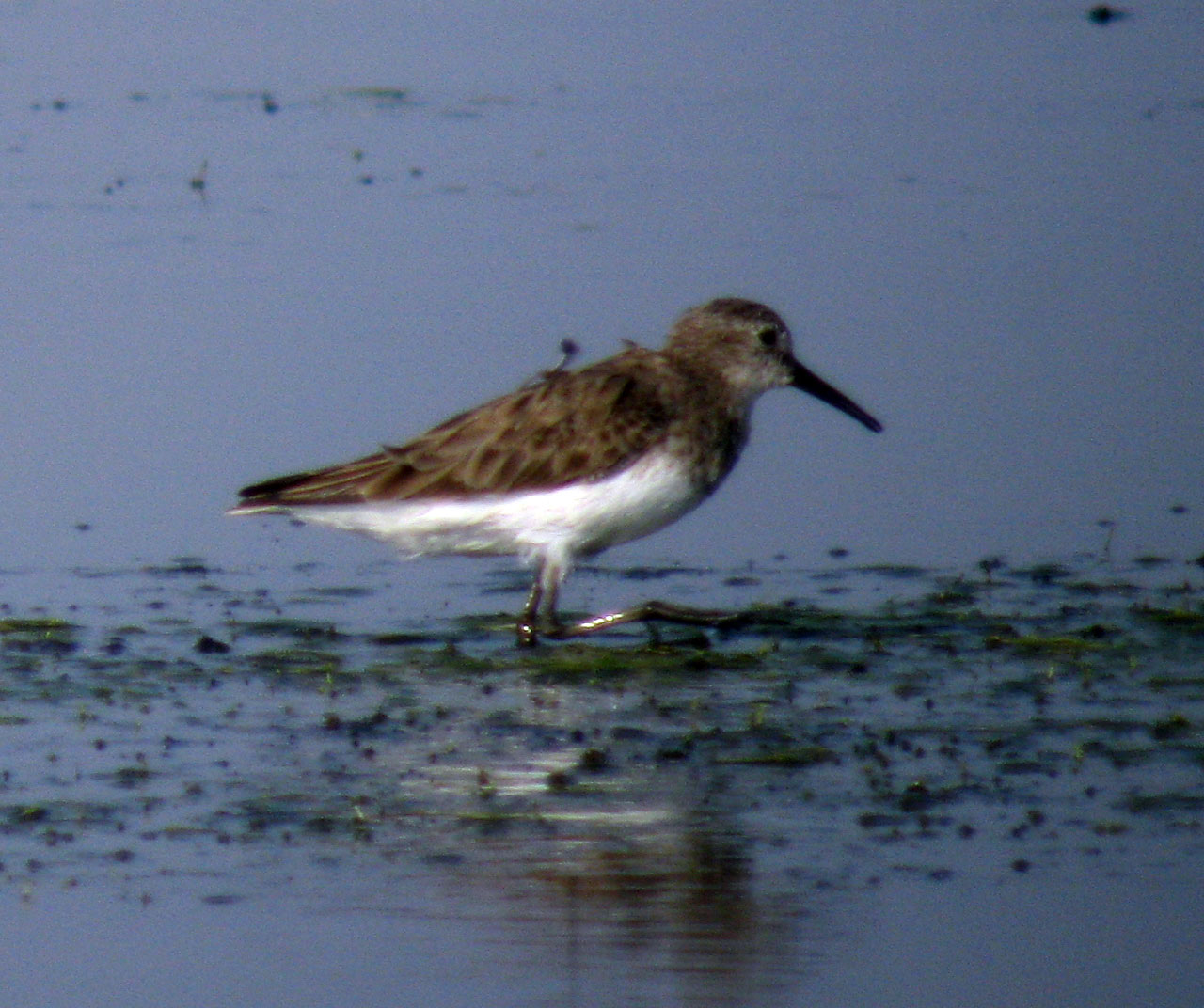
My first impression of the bird was Dunlin-like, but I quickly rejected that identification based on size, structure, behavior, and plumage. It was larger than the numerous Red-necked Stints around it, but clearly smaller than a few Dunlin and Curlew Sandpipers. Other things that did not match Dunlin were:
- shorter and straighter bill
- more slender body overall
- darker and more strongly-patterned upperparts
- darker crown
- dark olive-green legs
- tendency to tip far forward when feeding (vs Dunlin usually flat-backed)
- almost no pale wingstripe visible in flight (vs Dunlin’s broad and obvious white wingstripe)
No calls were heard. In brief flight views the rump appeared as dark or darker than a typical Dunlin, so I don’t think Curlew Sandpiper is involved as a parent.
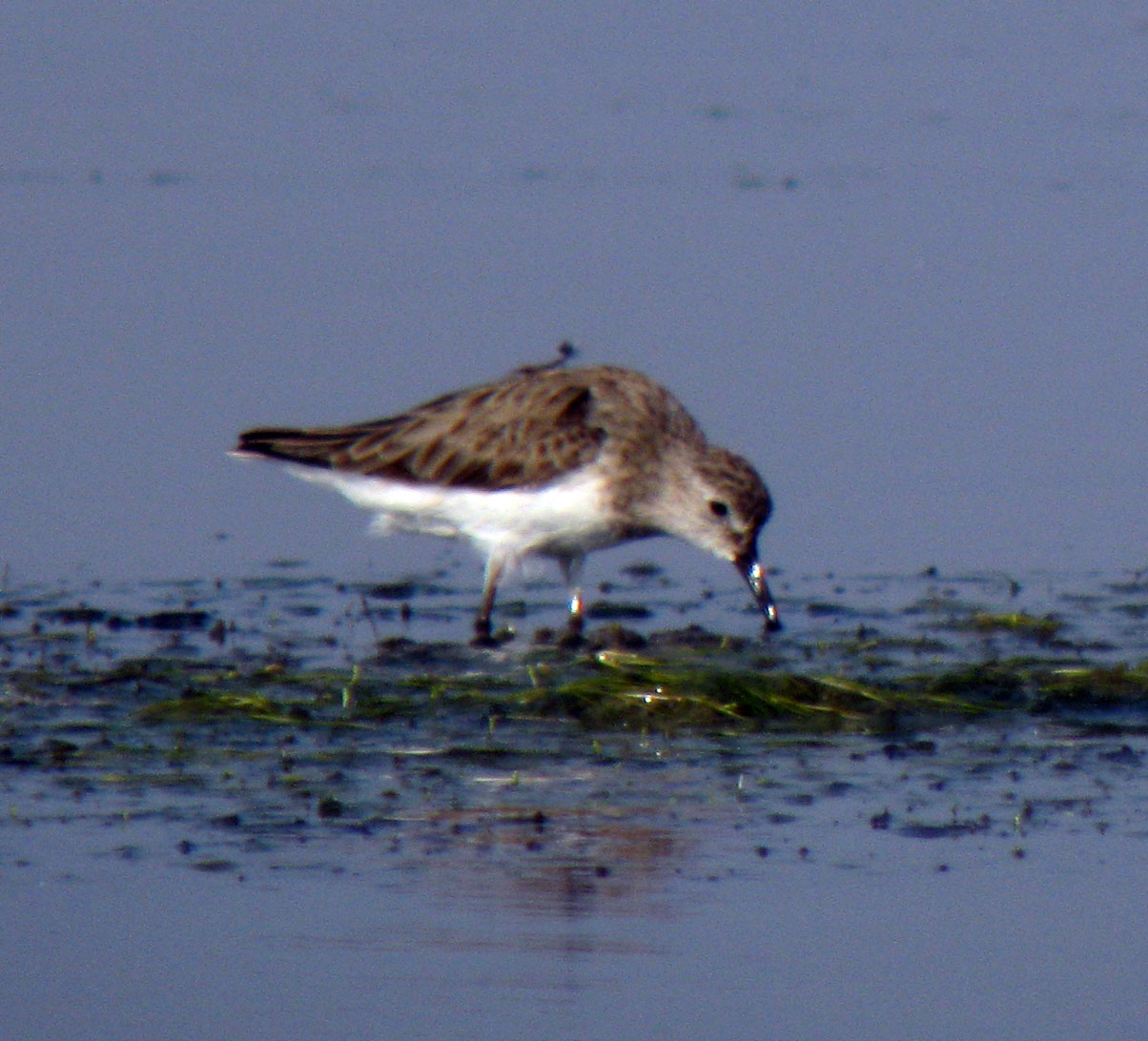
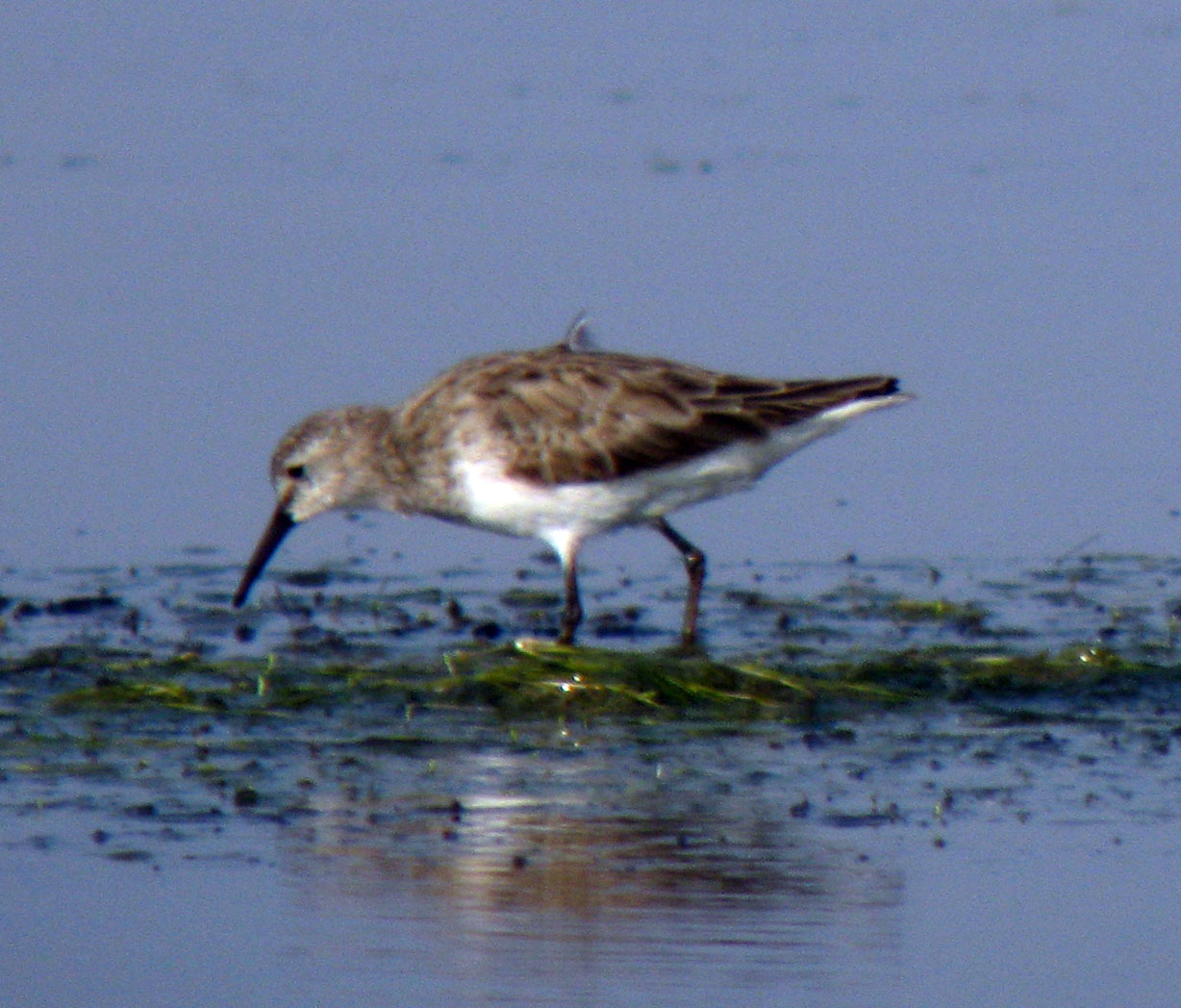
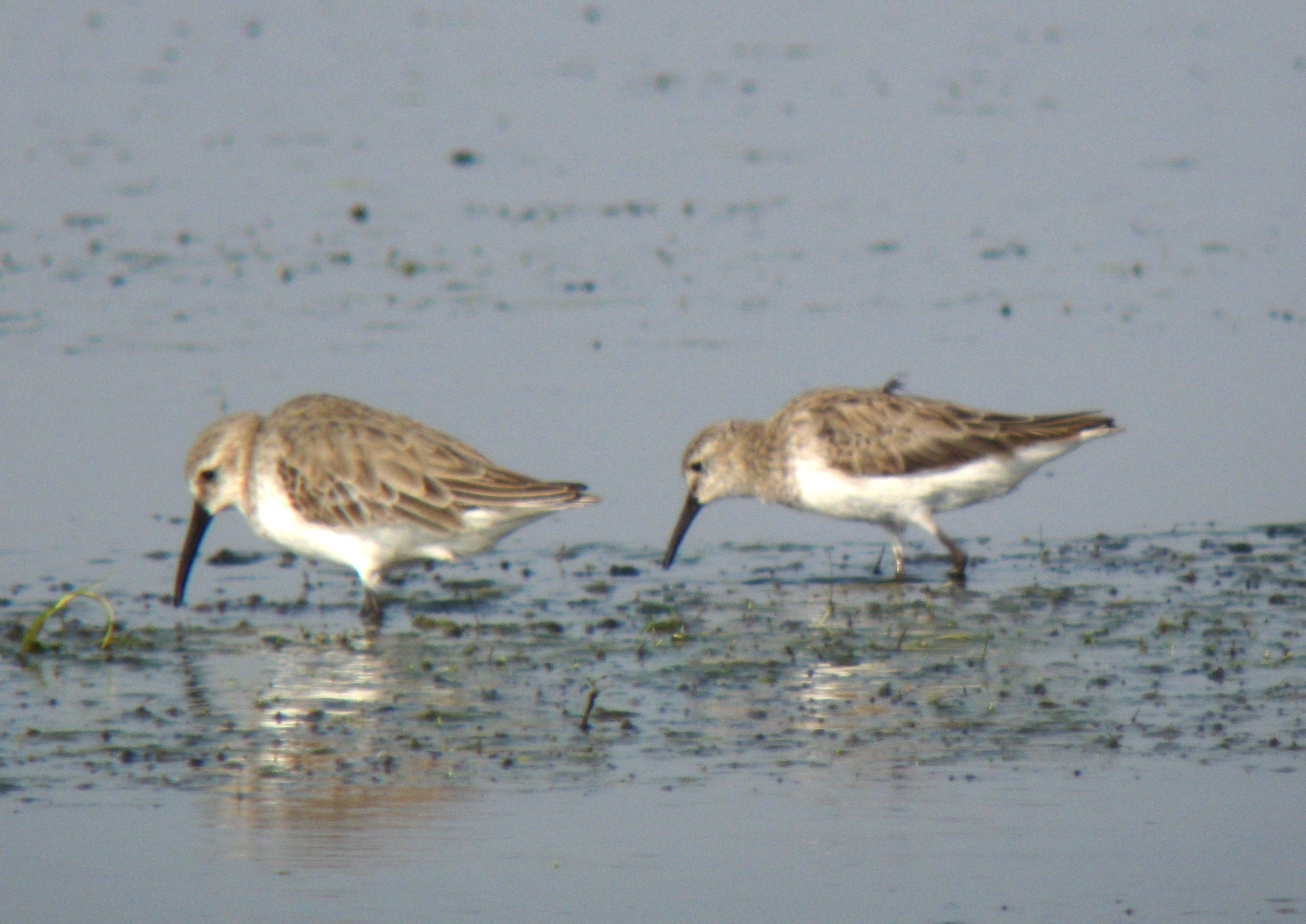
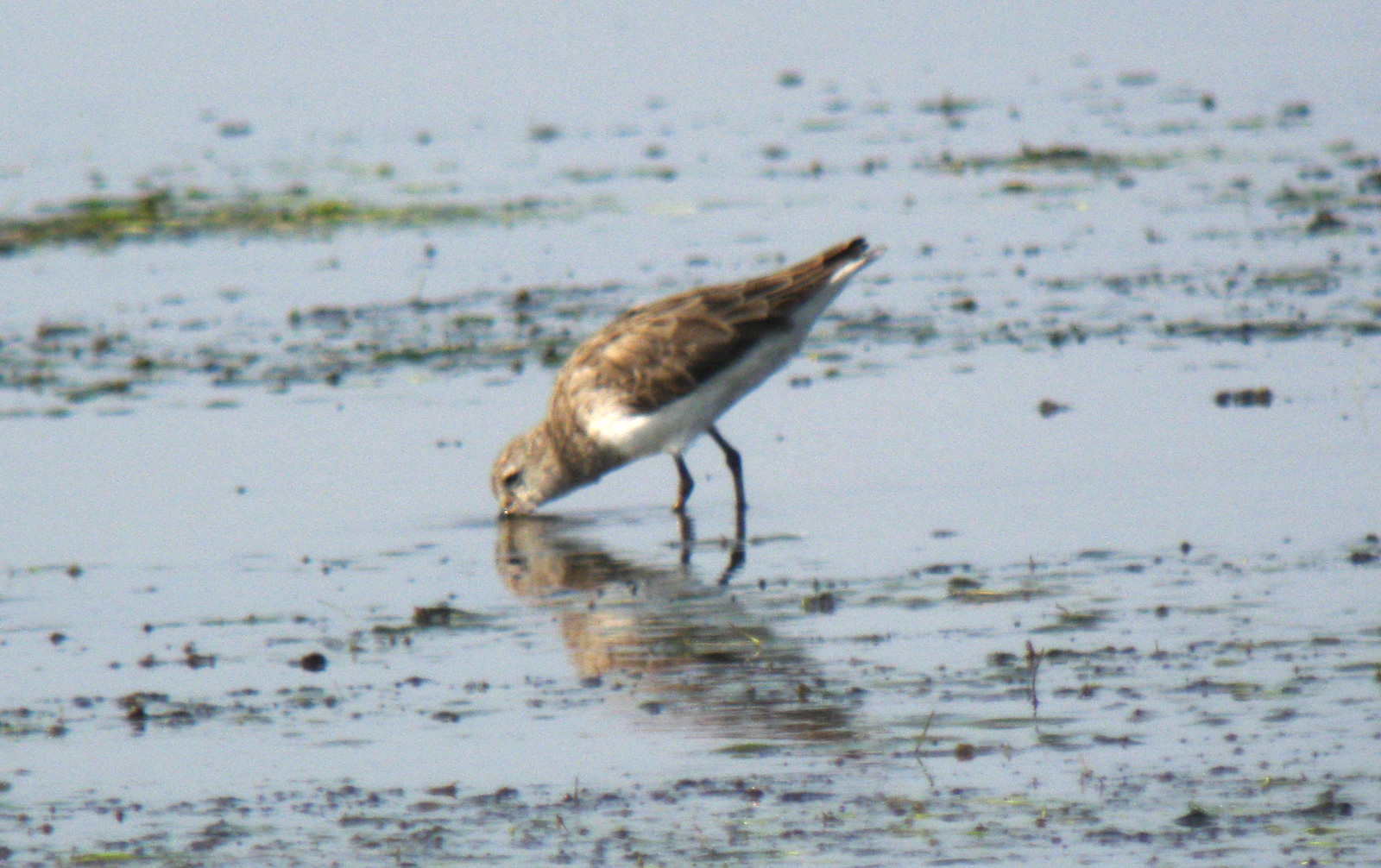
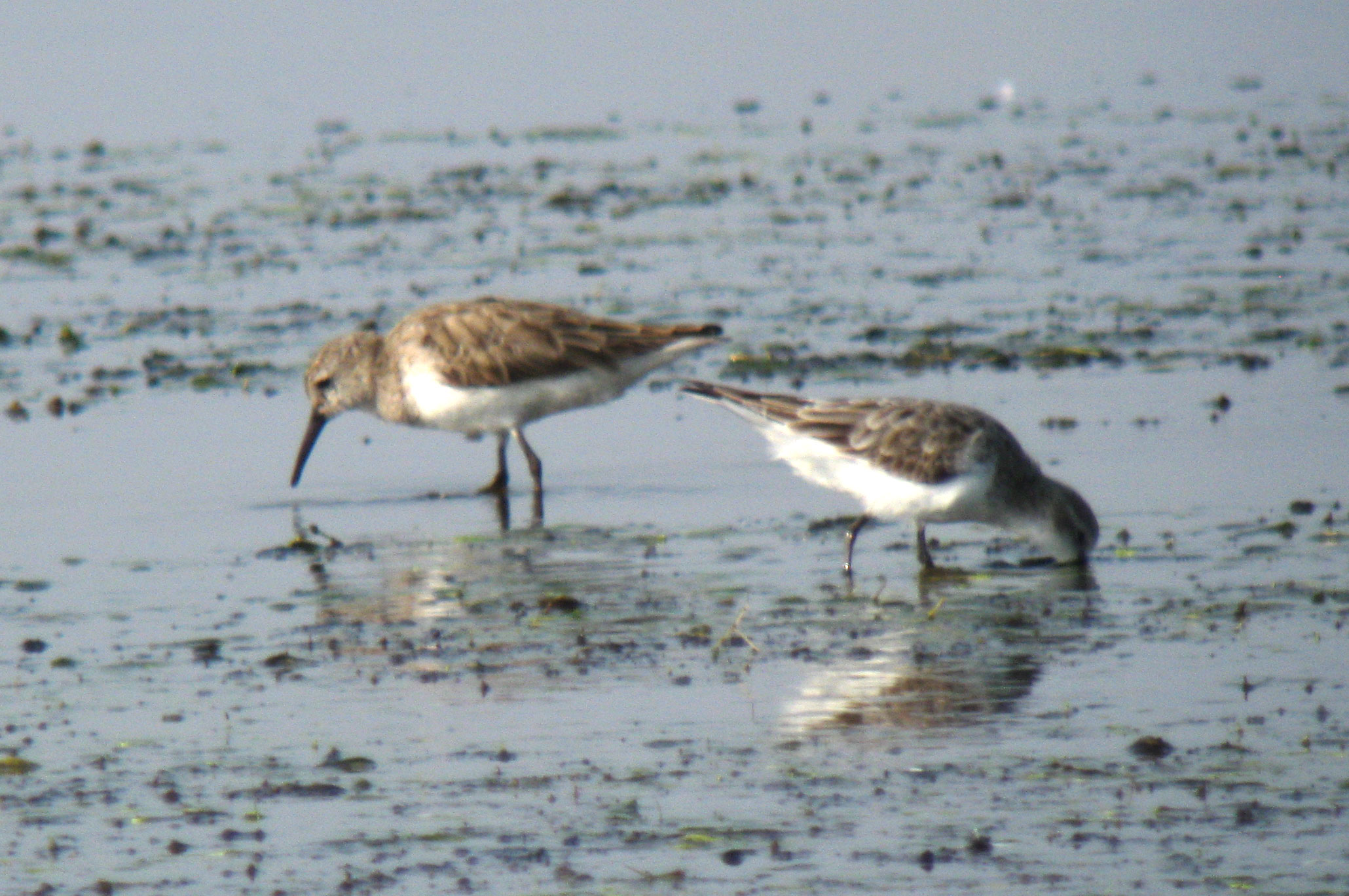
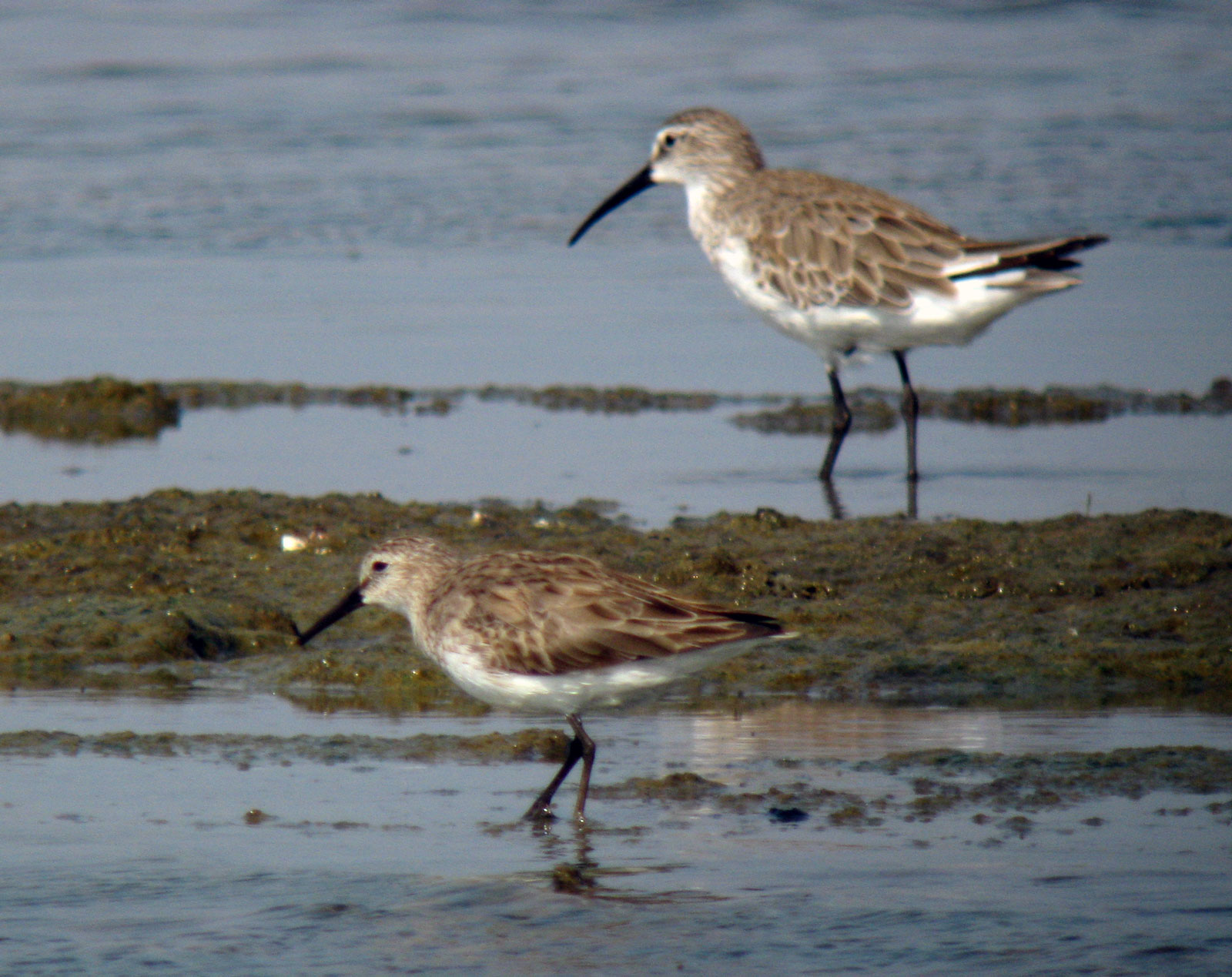
A few thoughts:
‘Cox’s’ Sandpiper is now known to be a hybrid of Pectoral X Curlew Sandpiper (at least DNA samples from three birds matched that parentage), but this bird from Thailand seems too small to be that combination, being much smaller than Curlew Sandpiper, intermediate between Curlew Sandpiper and Red-necked Stint. This seems smaller than any Pectoral or Sharp-tailed Sandpiper.
Either Pectoral or Sharp-tailed Sandpiper seems likely for one parent, as it would contribute the greenish legs, dark cap, and lack of wingstripe. Then the other parent must be smaller, with dark legs, maybe Red-necked Stint – but then the bill wouldn’t be so long?
Alternatively, the greenish legs and lack of wingstripe could come from a small bird like Long-toed Stint, and the larger and longer-billed parent could be Dunlin or maybe Curlew Sandpiper?? We’ll probably never know, but comments and suggestions are welcome.
Other references on hybrid sandpipers:
Hybrid sandpipers are very rare, but have been recorded more often in recent years, probably as a result of increasingly sophisticated observers.
‘Cox’s’ Sandpiper is known from over 30 sightings in Australia, and one apparent juvenile in Duxbury, Massachusetts
A juvenile identified as a Cox’s-type sandpiper from Japan is seen in photos here and appears very similar in size and structure to the Pak Thale bird.
Another from Okinawa, Japan here and perhaps the same bird in the following winter here.
Another juvenile from Japan is here.
‘Cooper’s’ Sandpiper was described as a new species from a specimen collected on Long Island in 1833. Now thought to be a hybrid Curlew x Sharp-tailed Sandpiper, with a similar bird collected in Australia in 1981.
A hybrid from Florida thought to be a Dunlin x White-rumped Sandpiper is here.
Two hybrids from South Beach, Chatham, Massachusetts in Jun-Jul 2008, most likely Dunlin x White-rumped are here. Probably one of the same birds was there in July 2007 (photos here and here). And more photos of a similar bird from there in Aug 2009 are here (including flight shots).
Another similar bird probably Dunlin X White-rumped Sandpiper was found on Long Island in Jun 2007 (photos here) and at the end of that same photo gallery a few shots of a similar bird from New York in July 1999.
Another apparent Dunlin x White-rumped was in Ontario in May 1994
An apparent Dunlin x Purple Sandpiper from England in Nov 1993 is described with photos here.
An apparent Little X Temminck’s Stint was photographed in the Netherlands
Apparent Buff-breasted X White-rumped or Baird’s Sandpiper hybrids have been seen in Massachusetts and Newfoundland.


Hi David
An interesting find & will no doubt keep many guessing for some time. My initial impression was a dark peep, but with a heavy ‘Dunlin’ type bill. If Dunlin is one of the parents, the small size size & pale legs might suggest the other was a Temminck’s Stint. I’ll certainly have a detailed look & will be interested in the outcome.
Cheers: Wayne
David,
I believe there are now 3 separate reports of Dunlin X White-rumped Sandpiper in Ontario.
Also, here is another hybrid type that I don’t think has previously been reported:
We found an adult Baird’s X Pectoral Sandpiper at Hillman Marsh (Point Pelee) on August 5-6, 2005; it was studied at extremely close range. I plan on publishing a note on this sighting.
Cheers,
Alan
Hi David,
Another presumed hybrid calidris (potentially a White-rumped Sandpiper X Dunlin)was found at Cley, Norfolk UK in July 1990 and was described, and illustrated, in Birding World, Vol.3 No. 7.
Regards,
Mark